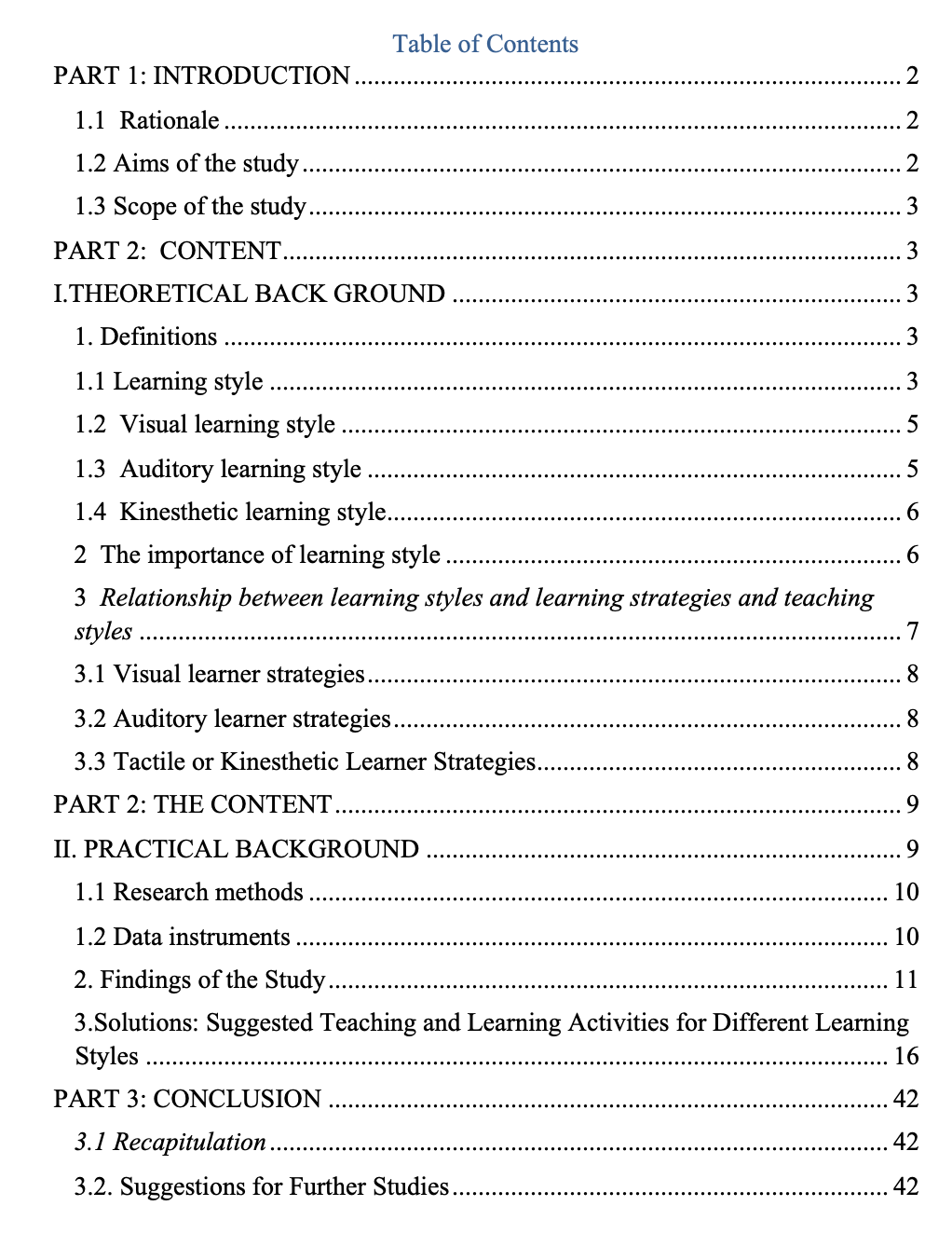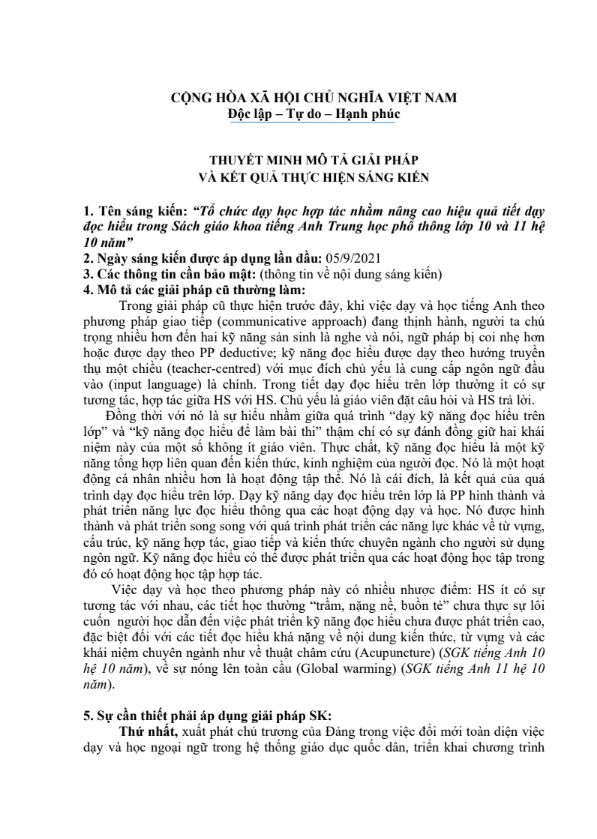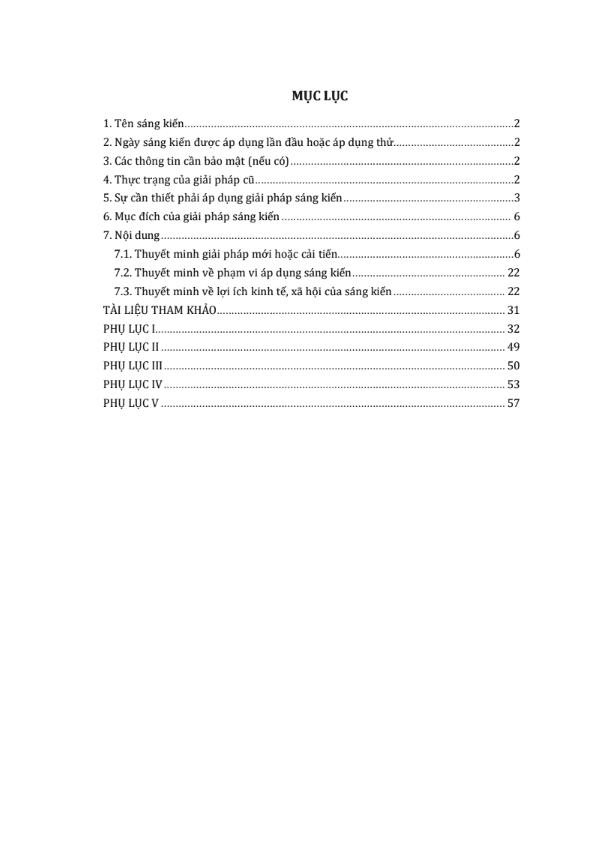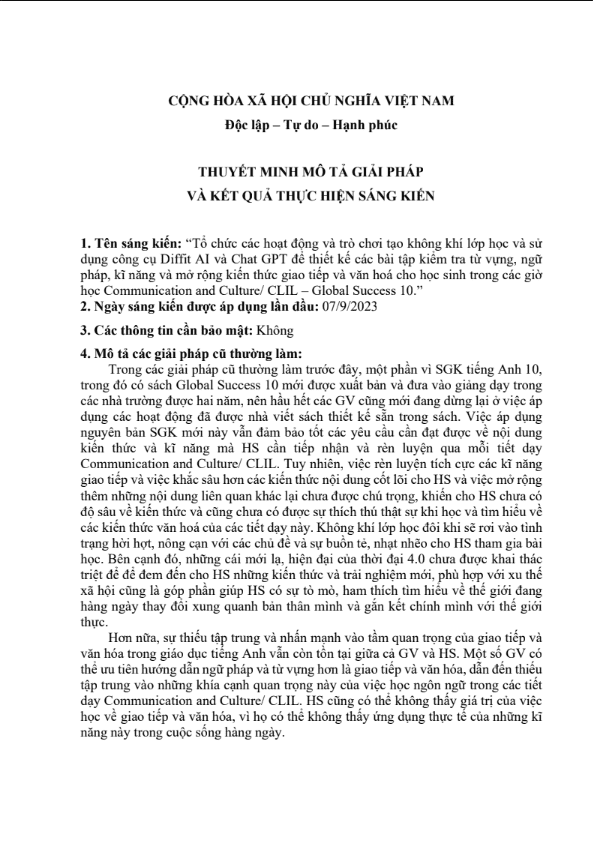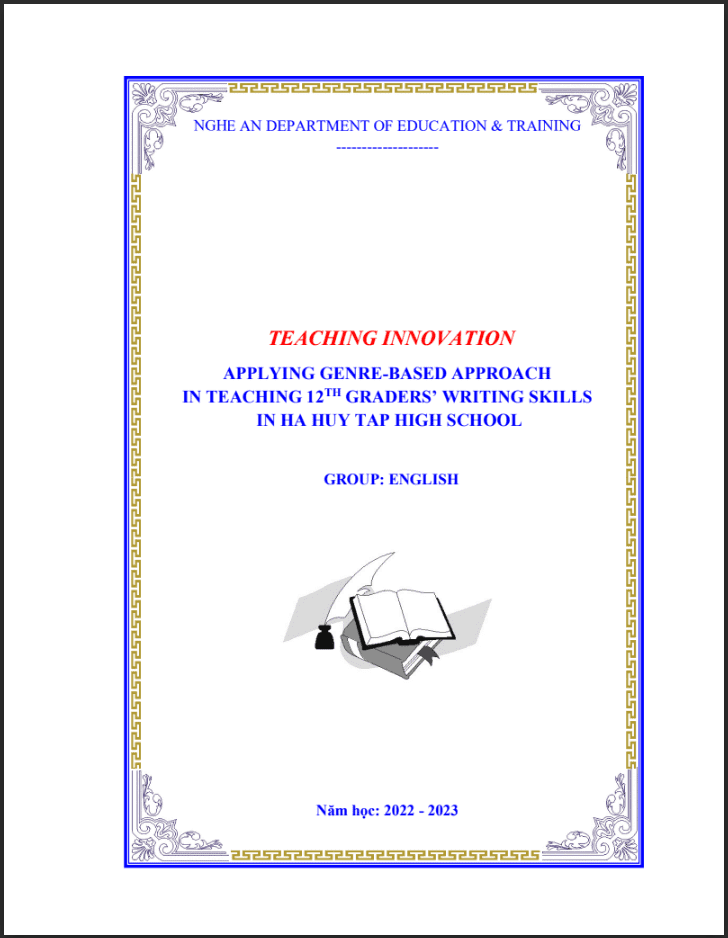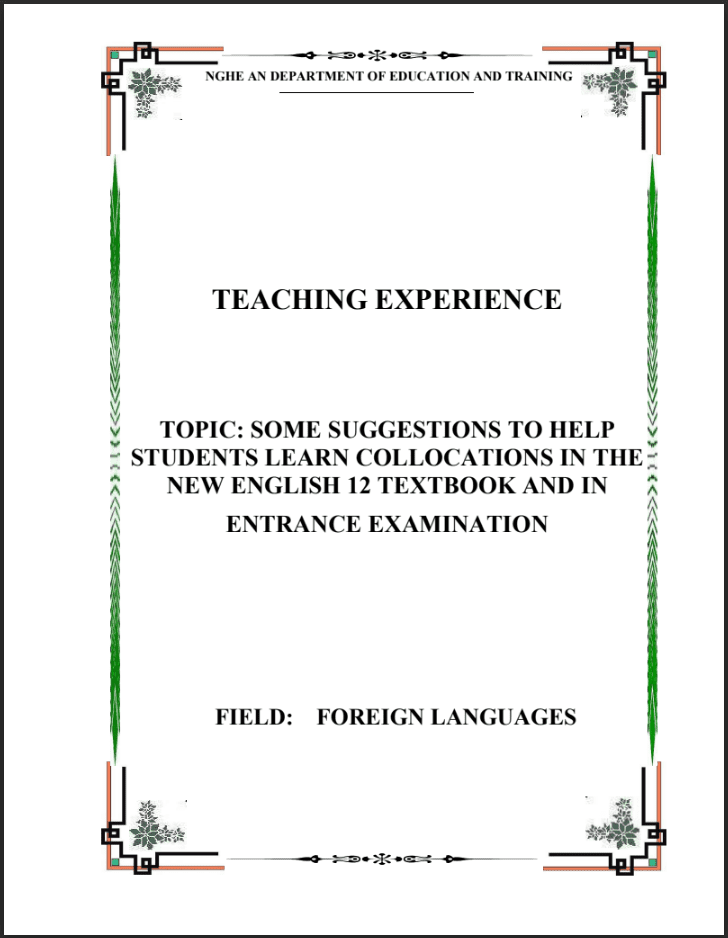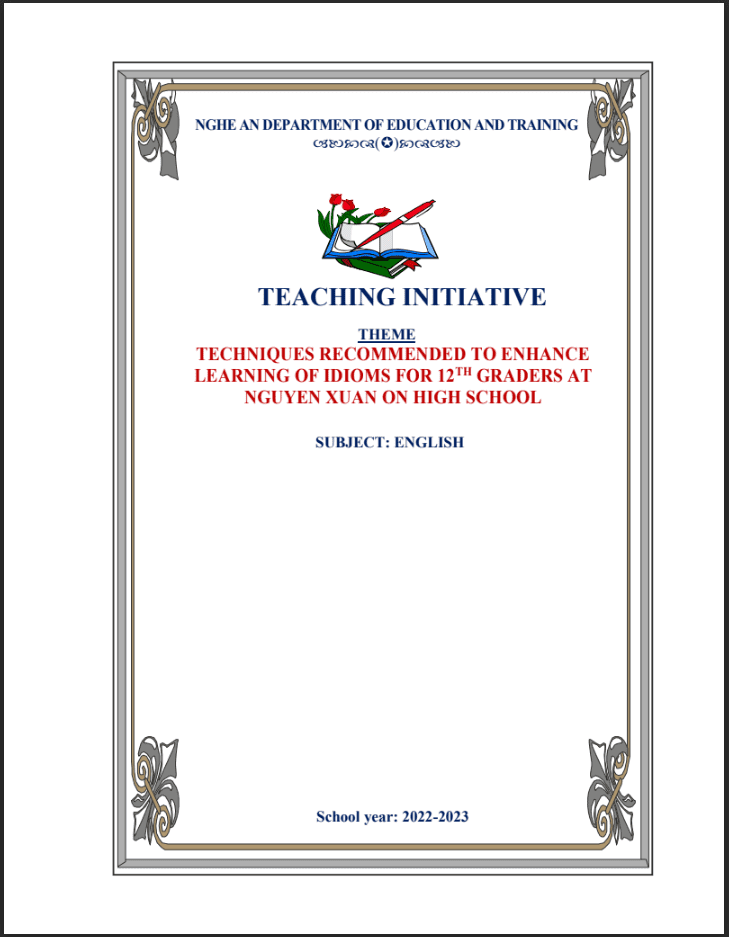SKKN A Study on Learning Style Preferences at Phan Dang Luu High School
- Mã tài liệu: MP0014 Copy
| Môn: | Tiếng anh |
| Lớp: | 10 |
| Bộ sách: | |
| Lượt xem: | 853 |
| Lượt tải: | 5 |
| Số trang: | 50 |
| Tác giả: | Lê Thị Yến |
| Trình độ chuyên môn: | Thạc sĩ giáo dục |
| Đơn vị công tác: | THPT Phan Đăng Lưu |
| Năm viết: | 2021-2022 |
| Số trang: | 50 |
| Tác giả: | Lê Thị Yến |
| Trình độ chuyên môn: | Thạc sĩ giáo dục |
| Đơn vị công tác: | THPT Phan Đăng Lưu |
| Năm viết: | 2021-2022 |
Sáng kiến kinh nghiệm “SKKN A Study on Learning Style Preferences at Phan Dang Luu High School” triển khai gồm các biện pháp nổi bật sau:
– teacher ask students to write about a paragraph about the singer he/she likes in the paddle in the link at home
– The teacher posts a sample paragraph about a famous song of a famous singe in the padlet
– Activity 3:
– Teacher gives comment students how to write a biography
Mô tả sản phẩm
PART 1: INTRODUCTION
1.1 Rationale
Today, English plays an important and necessary part in modern society. In any field of society, we use it to communicate. English becomes the international language in the world. Therefore, learning English is a trend of everyone nowadays.
In addition, learned what we want and we like makes us have really passion It is very vital to indicate the importance of English learning styles because there are demands of society. People needs to know and use English but they have difficulties in finding the best solution to study. Researching learning styles will help people have more chances to study better. Learning style is an important factor that affects to the second language learning (SLL). In fact, many researchers and teachers seem to know of the concept, and most of them find learning styles interesting and important. However, there is little research that reveals about the relationship between learning styles and success in English learning. Therefore, the author would like to find out more information about out of class learning and its application in teaching English.
Furthermore, both the Vietnamese teachers and learners of English at high school facing many problems in teaching and learning English. Especially as the students in the countryside who lack of good equipment to practice four skills in English (reading, writing, listening and speaking). Thus, carrying out a study on learning styles preferences to instruct students many practical and suitable lessons to learn in class and by themselves and help them more and more advanced. Lastly, the author is a teacher of English in high school. He is aware that knowing and catering to students’ learning styles can help them a great deal to improve their English
For the reason above, the author has determined to choose the topic
A study on learning style preferences at Phan Dang Luu high school
1.2 Aims of the study
As mentioned above, there are several reasons that lead the author to choose to carry out the study. Thus, the purposes of the study as follow
–To investigate the typical learning style at Phan Dang Luu high school.
-To provide teachers with activities needed to satisfy student’s learning styles in classroom
-To provide some clues for students to make use of their strengths in learning English.
1.3 Scope of the study
The study is carried out in Phan Dang Luu high school where the author has taught for 6 years. The subjects are limited to 88 students at the 10th graders in Phan Dang Luu high school, which is a limitation of the research as a result. The author wishes to focus on learning styles and the importance of learning styles, some suggestions for students to help them make use of their strengths and some clues for teachers to satisfy student’s learning styles in classroom
PART 2: CONTENT
I.THEORETICAL BACK GROUND
1. Definitions
Learning style is “an individual’s mode of gaining knowledge” (Dictionary.com, 2012). The visual learning style is considered to be a “process through which students gain knowledge and understanding through explicitly visual tools” (Lewis, 2012). The kinesthetic learning style means that the student learns best when they are permitted to touch and feel through physical activity (Lewis, 2012). The auditory learner learns best when they are able to hear the instruction (Fleming, 2012). An assessment is “an act of evaluation” (Dictionary.com, 2012).
1.1 Learning style
Learning styles are the preferred or habit patterns of mental functioning when dealing with new information. There are a great deals of definitions of learning styles. Because a learning style involves perception, cognition conceptualization, affect and behaviors, it is understandable that various learning style models and definition exist.
According to Keefe (1979, p4), learning styles are ‘characteristic, cognitive, affective and physiological behaviors that serve as relatively stable indicators of how learners perceive, interact with and respond to the learning environment”. What the author understands from Keefe’s definition is that learning styles refers to one’s attitudes and manners which are typical cognitive. They are signs that show how students become aware of communicate with and react favorably to learning situations
Cornett (1983, p9) proposes that “learning style is a consistent pattern of behavior but with a certain range of individual variability. Styles than are overall patterns that give general direction to learning behavior”. Cornett means that one’ learning style is not changing but to some extent it has the tendency to vary according to each individual. Styles play a significant role in guiding students’ learning.
Dunn and Griggs (1988, p3) define learning style as “the biologically and developmentally imposed set of characteristics that make the same teaching and method wonderful for some and terrible for others’ Dunn and Griggs want to refers to style conflicts between teachers and students. Each one has his/her own typical characteristics and personality sp he/she has his/her own ways of learning. In the classroom, students will do well if their learning styles suit their teacher’s and the teacher’s teaching methods will not be effective if they do not suit students’ learning styles.
Scarcella (1990, p114) views learning styles learning styles as ‘cognitive and interactional patterns which affect the ways in which students perceive, remember, and think. While Ehrman and Oxford (1990) have defined learning styles as
”preferred or habitual patterns of mental functioning when dealing with the new information”
The following definition by Kinsella (1995, p.171) appears to reflect that learning style refers to preferences and behaviors used by individuals to aid their learning in a given information
A learning style refers to an individual’s natural, habitual and preferred ways of absorbing processing, and retaining new information and skills which persists regardless of teaching methods or content area. Everyone has a learning style, but each person is as unique as a signature. Each signature appears to be influenced by both nature and nurture: it is a biological and developmental set of characteristics
TÀI LIỆU LIÊN QUAN
- 7
- 105
- 1
- [product_views]
- 5
- 173
- 2
- [product_views]
- 4
- 165
- 3
- [product_views]
- 4
- 129
- 4
- [product_views]
100.000 ₫
- 6
- 434
- 5
- [product_views]
100.000 ₫
- 2
- 507
- 6
- [product_views]
100.000 ₫
- 9
- 546
- 7
- [product_views]
100.000 ₫
- 4
- 409
- 8
- [product_views]
100.000 ₫
- 2
- 595
- 9
- [product_views]
100.000 ₫
- 0
- 538
- 10
- [product_views]

